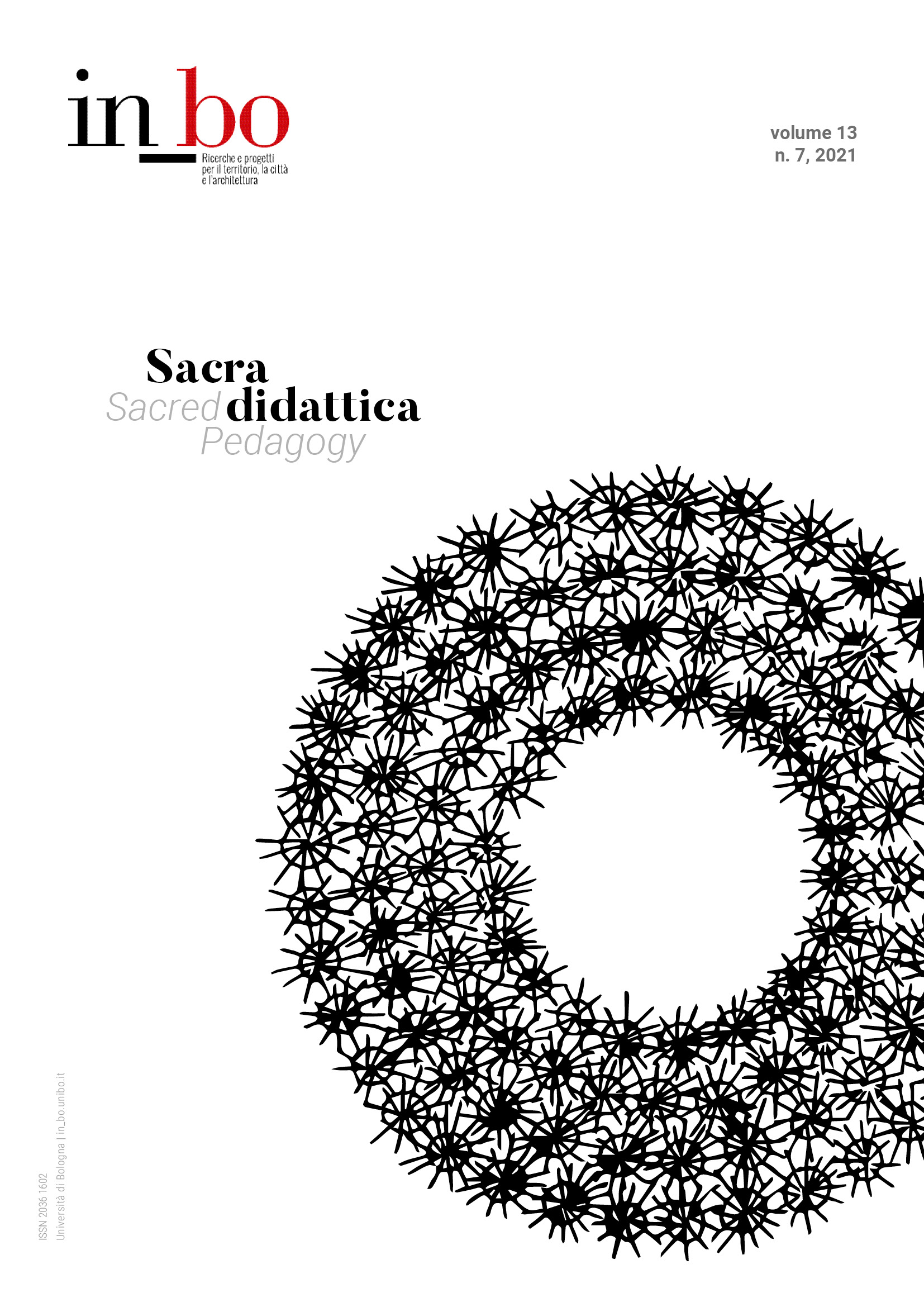Pasquale Culotta, Crispino Valenziano and the Tradition of the Cultic Composition in the School of Architecture
DOI:
https://doi.org/10.6092/issn.2036-1602/14790Keywords:
Pasquale Culotta, Crispino Valenziano, Architectural design pedagogy, Cultic Composition, Architecture for liturgyAbstract
The essay discusses the research on the design of cultic architecture in the context of contemporary architectural culture in Sicily, starting from the experience of Pasquale Culotta and Crispino Valenziano. Their partnership intertwined between the speculative dimension of writing and theoretical reflections, and in the concrete experimentations of both designed and built architecture. From their experiences, it emerges the systematic treatment of a quality that goes beyond the areas of sacred architecture to refer to a deeper interpretative key of cultic architecture, a conception in general often neglected if not completely ignored. Indeed, their work gives light to the rigid reading of sacred architecture, to be understood as a building structure that is not qualified by sacredness, or by distance as remoteness of our Christian God, but rather by Holiness, therefore from the proximity in the distance of the Christian God.
Through the discussion of important moments of conjunction between professional practice, as well as the establishment of a tradition in the discipline at the School of Architecture, and scientific research, it is possible to underline some specific characteristics such as the architecture of the place and the Mediterranean theme. These features motivate an even more important quality, reconnecting it to the universal experience of cultural architecture, namely the unit of space and time of the artifact as a spiritual expression, overlapping the nature of space ordered by the project.
Downloads
Published
How to Cite
Issue
Section
License
Copyright (c) 2022 Antonio Biancucci

This work is licensed under a Creative Commons Attribution-NonCommercial 3.0 Unported License.





